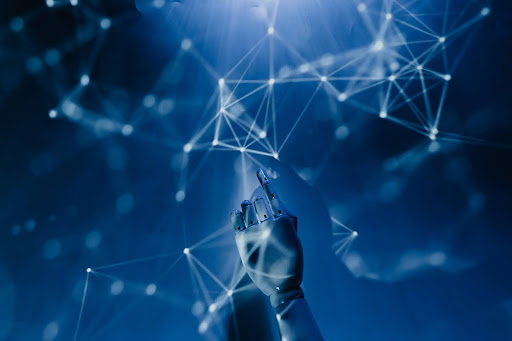
How Have Cinematic Depictions of AI Relationships Impacted the Broader Development of AI Companion Products?
In the world of film, relationships between humans and AI-driven companions are not new. In fact, it has been nearly 100 years since the robot Maria appeared in the 1927 film “Metropolis,” capturing the heart of the story’s main character.
In the years since “Metropolis,” a countless number of AI-driven companions have appeared in films. Their depictions have not only shaped public perception as to what those relationships might look like, but they have also influenced how actual AI companion products have been developed.
Developing and displaying emotions
Emotional attachment between humans and artificial intelligence is one of the key themes explored by science fiction films involving AI-driven companions. Rather than presenting robots driven by mechanization to automatically accomplish certain predefined tasks, many films present robots with emotions that, just like their human counterparts, bring feelings to the story.
Take the robotic character C-3PO from “Star Wars” as an example. C-3PO is programmed primarily to serve as an administrative aide to high-ranking government officials and his duties include helping officials understand cultures and providing language translation skills.
However, C-3PO also has an emotional side that mirrors his human counterparts. He takes offense at being called certain names, shows delight in being reunited with certain characters, and expresses concern when characters are put in danger.
“The capability for developing emotions is one of the most intriguing facets of the ongoing development of actual AI companion products,” says Sanjana Bandara, CEO of Deeva.ai. “In the healthcare industry, for example, emotional AI can provide companionship to patients, especially those dealing with loneliness or mental health issues. In customer service, AI that understands and responds to emotional cues can offer a more empathetic and personalized experience. In the entertainment and gaming industry, AI can empower companions designed to provide emotionally rich and interactive experiences, forming deeper connections with users.”
A growing number of platforms offering experiences with AI-driven companions seek to provide users with the deep emotional connections movies often depict. As some of these platforms explain, the companions are designed to make users feel heard and understood, outcomes that typically flow from interactions with an entity capable of empathy and other human emotions.
Establishing and growing in relationships
Machine learning is a facet of AI that theoretically allows computers to develop understanding that goes beyond their programming, allowing them to grow from experiences.
The 1999 film “Bicentennial Man” illustrates how machine learning has been depicted in films. Its main character is a robot named Andrew who is designed to perform household duties like cleaning and maintenance. As the film progresses, however, Andrew begins to develop feelings for the family he serves as well as creative skills, which he utilizes to strengthen his relationship with them.
“The capacity for machine learning is seen as a powerful feature of AI in the business world,” Bandara says. “It empowers the technology to improve its functionality as it is utilized, making it a more capable business tool without the need for additional training or programming.”
The ways in which machine learning can lead to stronger human/AI relationships are only starting to be explored. Filmmakers have presented a range of perspectives on the degree of authenticity that is possible in those relationships. Through stories like “Her,” “Ex Machina,” and “I, Robot,” they have suggested that AI-driven companions could have the capacity to grow in relationships and develop stronger emotional ties over time.
“The stories currently being produced for the big screen are becoming more nuanced in their presentation of AI-powered companions, challenging viewers to think deeply about the roles AI could play in society,” Bandara explains. “As public sentiment evolves, it will play a key role in directing the course developers take in giving AI the capacity for learning.”
Limited to serving their human counterparts
Another theme common in science fiction films involves AI-driven robots going bad, which often involves the robot leveraging an apparent emotional connection with a human to gain its freedom from human-imposed limitations. Oftentimes, it comes at the cost of a human life.
Those films generally communicate that the advancement of AI-driven companions should be limited to keep them under the control of their human counterparts. They warn about the potential of unlimited intelligence in AI companions that do not remain subservient to human masters.
“The concerns sparked by such films play heavily in the considerations shaping modern AI development by forcing developers to navigate ethical concerns thoughtfully,” Bandara explains. “While pursuing the goal of enhancing human life through the advancement of AI, they must also ensure it respects certain boundaries.”
For nearly 100 years, films have explored how AI companions could interact with humans and their stories involve a wide variety of depictions, ranging from deeply encouraging to deeply disturbing. Each plays a role in constructing the perception humans have of the potential roles AI companions could play in their lives. Developers who stay committed to creating companions aligned with societal values will need to pay close attention to the future of filmmaking and its ongoing impact on public opinion regarding AI.






